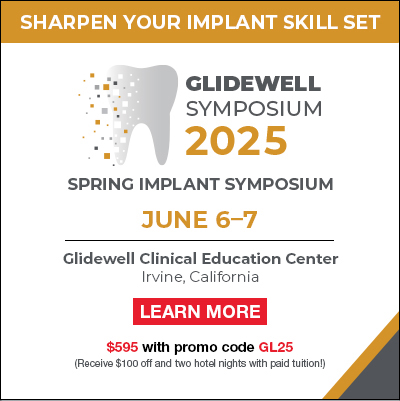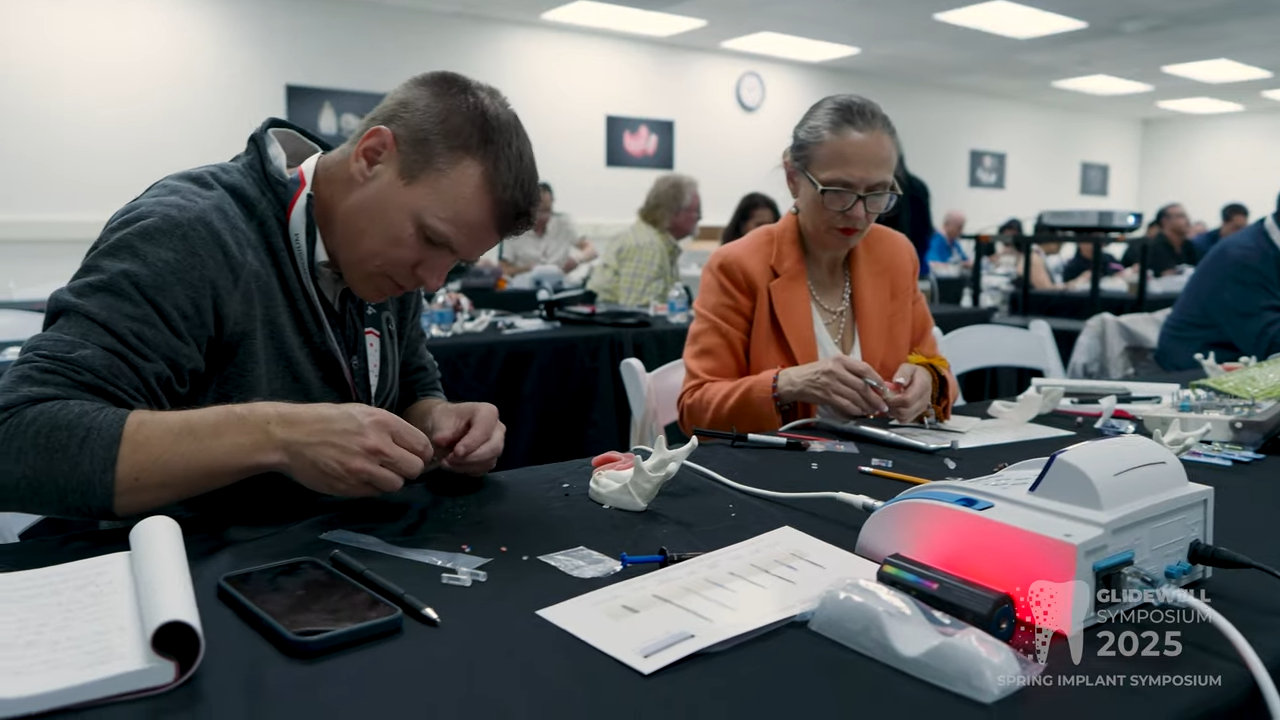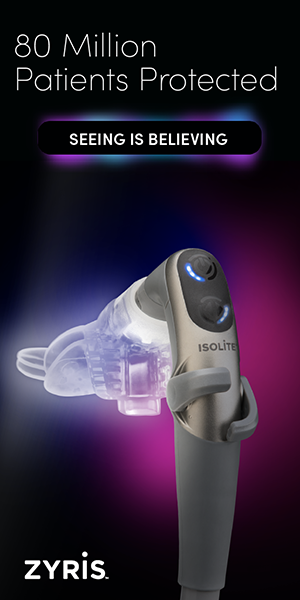The irreversible hydrocolloid that we commonly refer to as alginate is extensively used for study casts, master casts, and working models for the fabrication of intraoral appliances.1 Alginate is the most common impression material used for creating the opposing model for crown and bridge, but it has many shortcomings as an ideal impression material. The ideal impression material should reproduce oral detail accurately, have high tear strength, have reasonable working and setting time, be biocompatible, be dimensionally stable, allow multiple pours, and not be affected in its accuracy by disinfection.2
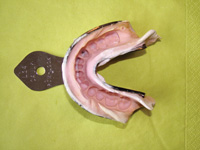 |
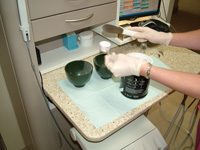 |
| Figure 1. The dehydration of the flanges of this alginate impression is noticeable 2 minutes after taking the impression. | Figure 2. Amount of powder in the measuring cup can be highly variable. |
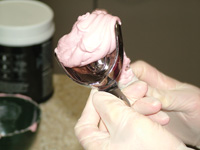 |
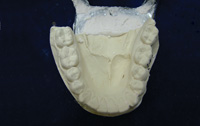 |
| Figure 3. Each and every mix of traditional alginate will have different thixotropy and working/setting time due to variables in water/powder ratio and temperature of the water. | Figure 4. Model derived from alginate impression without the use of an adhesive. Note that the lower left quadrant has pulled away from the tray. |
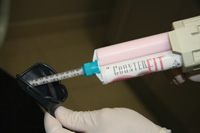 |
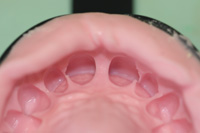 |
| Figure 5. Alginate substitute (COUNTER-FIT [CLINICIAN’S CHOICE]) being injected into a Borderlock (CLINICIAN’S CHOICE) tray lined with a PVS (Affinity Tray Adhesive [CLINICIAN’S CHOICE]) adhesive. | Figure 6. Internal detail of a COUNTER-FIT impression that has been repoured 4 times. (An alginate should never be poured a second time.) |
BACKGROUND ON ALGINATES
Due to its hydrophilic nature, alginate takes a good impression in a moist environment.3 However, this very feature, which is so important to clinicians, creates one of the most severe limitations for its use. This very property creates an impression that is not dimensionally stable due to environmental humidity and temperature.4-7 This feature of hydrophilicity also affects the stability of polyethers which can change dimensionally (larger by 30 to 240 µm; or smaller by 20 to 120 µm) depending on humidity.8 Polyether impressions and alginate impressions wrapped in moist towels should never be shipped to the laboratory together in the same polybag since the polyether impression can absorb water from the alginate impression or its wet wrap. Alginate impressions should be poured in dental stone immediately for maximum accuracy because of the material’s ability to imbibe or lose moisture. After 10 minutes of storage time, alginate begins to distort, and after one to 3 hours cannot be used for many clinical purposes, especially fixed prosthodontics (Figure 1).9
The stability of alginates is also affected by the reaction of syneresis, in which fibril cross-linking continues, creating a contraction with time and an exudation of water. This reaction therefore necessitates immediate pour up of the alginate. Irreversible hydrocolloids such as alginate can only be poured up once because of hydrophilicity.
Hydrophilicity also creates a monumental problem with disinfection of irreversible hydrocolloid with hundreds of research articles looking at types of disinfectants in various combinations with a multitude of alginates. These investigations show that disinfection can create severe effects on dimensional accuracy with immersion creating the greatest inaccuracy, as well as an effect on the surface quality of the casts produced.10-14 Alginate has a low tear strength and tears easily especially in deep undercuts and pontic areas. Alginate has a tendency to stick to teeth, with possible alginate tears on removal of the alginate, and polishing or prophylaxis of the teeth exacerbates the problem, preventing the alginate material from wetting the teeth and reproducing detail.15 If the teeth are dried from taking one impression, retaking a good detailed second impression of the same arch is impossible.2
If one adds the clinical variability of the inaccuracy of the amount of powder used in the mix (Figure 2); the amount and temperature of the water both which affect thixotropy and working time (Figure 3); the effects of mixing methods on the mechanical properties of alginates16; the effect of type and design of tray on clinical accuracy17,18; the effects of using adhesives19,20 (Figure 4); and the exposure to hazardous dust,1,21 it is not surprising that alginate substitutes are becoming more popular (Table)(Figure 5).
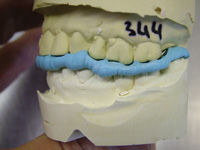 |
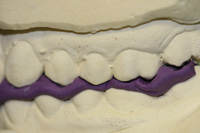 |
| Figure 7. Alginate derived stone models on a PVS bite registration material showing an obvious open-bite relationship. | Figure 8. Alginate driven stone models on Quickbite (CLINICIAN’S CHOICE) PVS bite registration material showing inaccurate fit. |
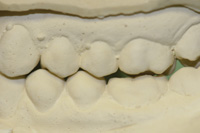 |
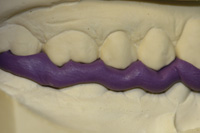 |
| Figure 9. Mounted case from Figure 8 showing mismounted open bite. | Figure 10. COUNTER-FIT driven stone model on Quickbite PVS bite registration material shows good interdigitation of the 3 components. |
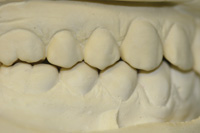 |
| Figure 11. Precise mounting of the opposing casts is obvious when using matching accuracies in the impression and bite registration materials. This creates clinical predictability. |

